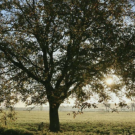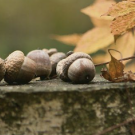Who Benefits from Oak Trees Gifts and How to be a Steward
1-LS1-1, K-ESS3-1, RI.1.3, SL.1.1, W.1.2Students explore the concept of the oak tree as a keystone species and learn who benefits from its gifts—humans and wildlife alike. They are introduced to Indigenous stewardship, including controlled burning as a traditional practice to support oak habitats. Students engage in discussion, categorization activities, and create artwork or writing to define their role as stewards of the land.




